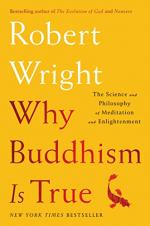
|
| Name: _________________________ | Period: ___________________ |
This test consists of 5 multiple choice questions, 5 short answer questions, and 10 short essay questions.
Multiple Choice Questions
1. In what year did the author of the book What the Buddah Taught write the work?
(a) 2001.
(b) 1983.
(c) 1973.
(d) 1959.
2. What emotion does the author say he feels when he is getting ready for a public speaking engagement?
(a) Pride.
(b) Weakness.
(c) Shame.
(d) Anxiety.
3. On what body process should first-timers focus when meditating?
(a) Bile.
(b) Breath.
(c) Blood.
(d) Phlegm.
4. What is the name of the eminent twentieth-century scholar of Buddhism?
(a) Aaron Beck.
(b) Edward Conze.
(c) Bhikkhu Bodhi.
(d) Jerome Barkow.
5. The author suggests that the reader check out the enlightenment scene in which film in order to get an idea of the vibrancy of the experience?
(a) Shaolin.
(b) Holy Smoke.
(c) Little Buddha.
(d) Kundun.
Short Answer Questions
1. What is the title of Chapter 2 of Buddhism is True?
2. What types of insects were making noise outside of the author's window on the fifth night of his first meditation retreat?
3. In most people, the left hemisphere of the brain controls what?
4. What is the title of Chapter 3 of Buddhism is True?
5. Though the author admits that there are paradoxes within Buddhism, he says that there are also paradoxes within which branch of science?
Short Essay Questions
1. Discuss an example or anecdote used by the author to demonstrate the value of mindfulness mediation.
2. Discuss the author's decision to begin the book with an allusion to the film The Matrix.
3. What is the author's view of the phenomenon of human feelings?
4. Discuss the tendency of humans to engage in self-inflation.
5. To whom does the author recommend a meditation practice?
6. What effect is the author's choice of the word "delusions" intended to have on the reader?
7. Explain the concept of “beneffectance” (82) set forth by the psychologist Anthony Greenwald.
8. What is the author's analysis of the human fear of public speaking?
9. How does the author go about trying to depict the bliss he feels as a result of meditation?
10. What does the author say about ways in which people should NOT "conceive of modules" (86)?
|
This section contains 1,309 words (approx. 5 pages at 300 words per page) |

|




